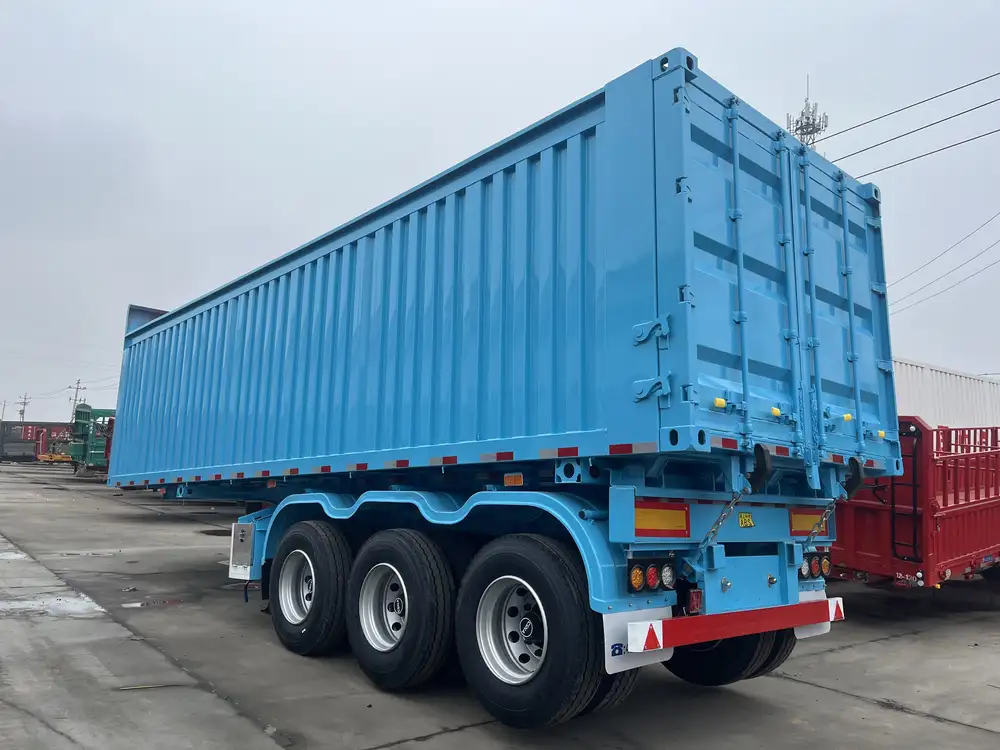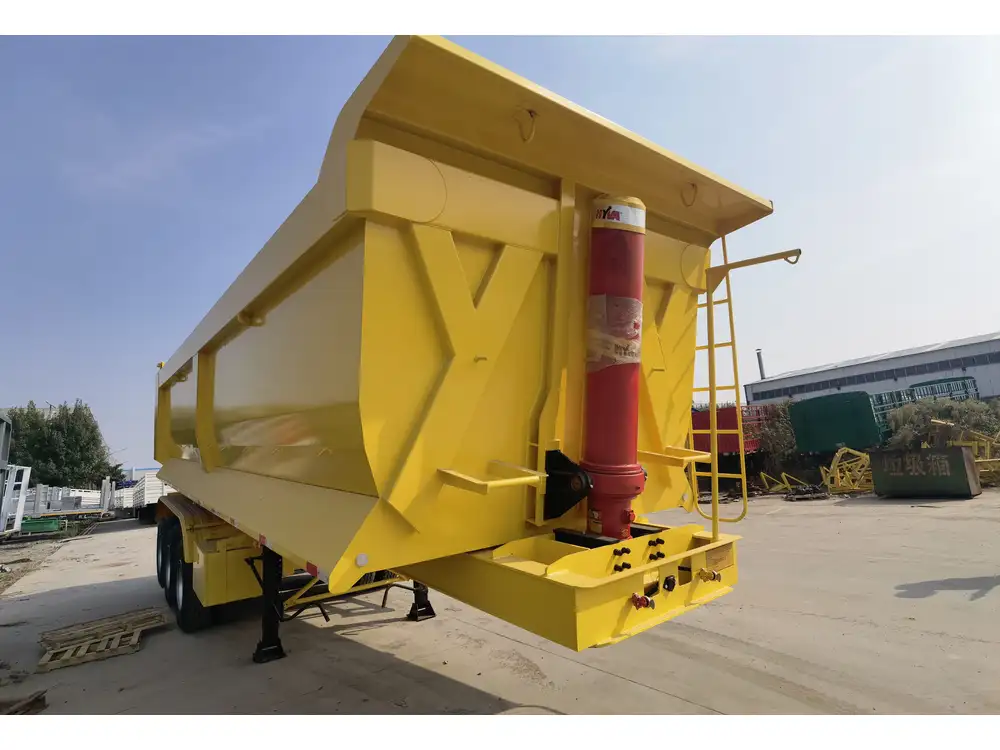When it comes to operating a dump trailer efficiently, understanding how to adjust the hydraulic pressure is crucial for safety, performance, and longevity of your equipment. Whether you’re a seasoned operator or new to handling heavy-duty trailers, this guide will walk you through the intricate steps needed to successfully adjust the hydraulic pressure on your dump trailer.
Understanding Hydraulic Systems in Dump Trailers
Before we dive into the adjustment process, it’s vital to grasp the basic components of a hydraulic system in a dump trailer. This knowledge will help you appreciate the nuances involved in the adjustments:
| Component | Function |
|---|---|
| Hydraulic Pump | Pressurizes hydraulic fluid and circulates it |
| Hydraulic Cylinder | Converts hydraulic energy into mechanical energy |
| Control Valve | Directs the flow of hydraulic fluid |
| Reservoir | Stores hydraulic fluid |
| Pressure Gauge | Displays current hydraulic pressure |
The Importance of Correct Hydraulic Pressure
Maintaining the correct hydraulic pressure ensures that your dump trailer operates smoothly. Too much pressure can lead to equipment failure, while too little may result in sluggish operation or even failure to lift the load.

Signs You Need to Adjust Hydraulic Pressure
Recognizing when adjustments are necessary is essential for the efficient performance of your dump trailer. Some common indicators include:
- Inconsistent Lifting: If the trailer struggles to lift or won’t raise entirely, it could be due to improper hydraulic pressure.
- Leakage: Noticeable fluid leaks around fittings or hoses can signify issues within the hydraulic system.
- Delayed Response: A lag in the hydraulic action when activating the control lever suggests an adjustment may be needed.
Tools Required for Adjustment
To make the adjustment process seamless, gather the following tools:
- Pressure Gauge: To measure the hydraulic system’s pressure.
- Adjustable Wrench: For loosening and tightening fittings.
- Screwdrivers (Flat and Phillips): For accessing components.
- Hydraulic Oil: Ensure the reservoir is full or top up as required.
- Safety Gear: Gloves and goggles for protection during the adjustment process.
Step-by-Step Guide to Adjusting Hydraulic Pressure

1. Safety First
Before initiating any adjustments, prioritize safety:
- Park the Trailer: Ensure that your dump trailer is parked on a level surface.
- Shut Down: Turn off any power sources and release any stored hydraulic pressure.
- Engage Parking Brakes: Secure the trailer in position.
2. Inspect the Hydraulic Fluid Level
- Locate the Reservoir: Find the hydraulic fluid reservoir.
- Check Level: Verify that the fluid level meets the manufacturer’s recommended mark. Add hydraulic oil if necessary.
3. Measure Current Hydraulic Pressure
- Connect Pressure Gauge: Attach a pressure gauge to the hydraulic system. This is typically done near the pump or control valve.
- Activate the System: Engage the control lever to raise the trailer slightly and observe the reading on the gauge. Record this initial pressure.

4. Identify the Adjustment Screw
- Pump Location: Locate the hydraulic pump on the trailer.
- Adjustment Screw: Find the adjustment screw or knob, usually located near the pressure gauge.
5. Make the Necessary Adjustments
- Turn Clockwise: To increase pressure, turn the adjustment screw clockwise.
- Turn Counter-Clockwise: To decrease pressure, turn it counter-clockwise.
- Incremental Changes: Adjust in small increments (about 1/4 turn) to avoid drastic changes.
6. Retest the Pressure
- Recheck Pressure: After adjustments, repeat the pressure measurement with the gauge.
- Aim for Recommendations: Refer to your manufacturer’s specs for ideal operating pressure levels.

7. Check for Leaks
- Inspect Connections: While the system is under pressure, examine the pump, hoses, and connections for any signs of leakage.
- Tighten Connections: If leaks are found, tighten them using the adjustable wrench.
8. Final Test Ride
- Operational Test: Take the dump trailer on a short test ride with a light load.
- Monitor Performance: Ensure it lifts and lowers smoothly without hesitation.
Common Problems & Solutions
| Problem | Possible Cause | Solution |
|---|---|---|
| Trailer Won’t Lift | Low hydraulic pressure | Adjust pressure following steps above |
| Uneven Lifting | Air in hydraulic system | Bleed the system to remove air |
| Hydraulic Fluid Overheating | Overuse or low fluid levels | Allow cooling time; check fluid levels |
| Frequent Leakage | Worn hoses or fittings | Replace damaged components |

Maintenance Tips for Your Dump Trailer
To ensure your dump trailer remains in peak operating condition, implement these routine maintenance practices:
Regular Fluid Checks
Conduct regular inspections of the hydraulic fluid levels. Maintaining appropriate levels is vital for performance and longevity.
Inspect Components
Perform visual inspections of all hydraulic components periodically. Look for cracks, leaks, or wear that could lead to failure.

Lubrication
Ensure that moving parts such as hinges and pivots are adequately lubricated to reduce wear and tear.
Seasonal Maintenance
Consider seasonal checks, especially before and after heavy use periods. Winterizing and preparing for summer operations can prevent costly repairs.
When to Call a Professional
While the steps above will often resolve issues, certain situations may necessitate contacting a hydraulic professional:
- Complex System Failures: If there are systemic issues within the hydraulic configuration.
- Persistent Leaks: Continuous leaking despite tightening and adjustments.
- Expert Diagnosis: When in doubt, seek professional inspection and diagnostic services.

Conclusion
The proper adjustment of hydraulic pressure on your dump trailer is more than a maintenance task; it’s a critical step in ensuring operational efficiency, safety, and longevity of your equipment. By following the outlined steps, you can effectively manage hydraulic pressure, troubleshoot problems, and keep your trailer in top condition. Regular maintenance and timely adjustments not only enhance performance but also extend the lifespan of your trailer, providing you with a reliable companion for your hauling needs.
Through understanding and applying the outlined principles, you ensure that your dump trailer remains sturdy, accessible, and reliable on every journey. Remember, an informed operator is an efficient operator.



